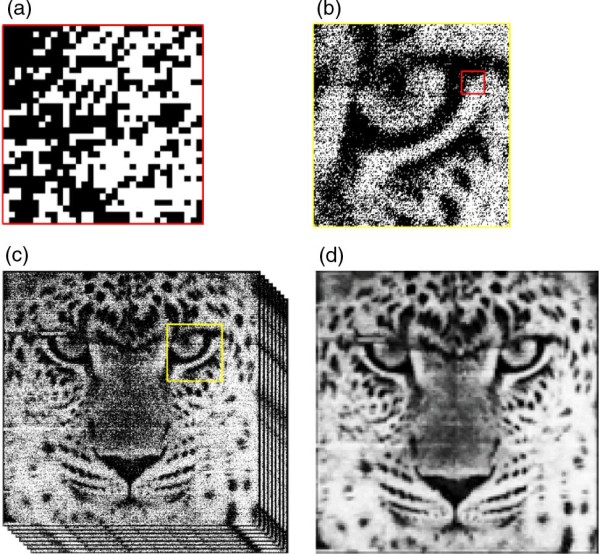CMOS inventor has created a cheap photon sensor operating at room temperature at 1040 FPS

Illustration of the process of image formation by the prototype QIS chip with a resolution of 1 Mjot at a frequency of 1040 frames / s. In the upper left corner there is an enlarged area of the common field of binary single-photon data (1024 × 1024), obtained from the sensor at 1040 FPS. In the lower right corner there is an image with grayscale, which is obtained by processing the original data from the sensor using the noise elimination algorithm.
High-performance photon detectors are now widely used in science, night-vision cameras, as well as in car sensors and security cameras. The performance of the detectors is determined by several key factors:
- error rate calculation;
- reading speed;
- spatial resolution;
- quantum efficiency;
- dark current.
Currently, single photon avalanche diodes (SPAD) and charge coupled electron multiplication devices (EMCCD) are on the market. Both types of detectors rely on avalanche multiplication to generate a high voltage signal from a single photon. Such devices require a high operating voltage to create a critical electric field in which an avalanche effect is possible.
')
Specialists from the School of Engineering Dyermut Tayert created a radically new photon detector called Quanta Image Sensor (QIS), which can make a real revolution in all areas that use this type of device.
What is the problem with the photon detectors SPAD and EMCCD? The fact is that such a high operating voltage is incompatible with advanced CMOS photosensor technologies (CMOS), and therefore single photon detectors have to be made large and cumbersome, with low spatial resolution and increased power dissipation. The use of avalanche multiplication also increases the sensitivity of these detectors to the dark current, which is usually caused by thermal electrons or re-emission of an electron in an interface trap. At room temperature, from 20 to several hundred dark electrons per second are recorded.
The dark current of this level is very high and limits the lower limit of photosensitivity. Moreover, to work at this lower boundary, external cooling is always required to reduce the number of dark electrons.
Single-photon avalanche diodes have another drawback: they require additional chips to calculate the number of photons received, which leads to burdening the whole structure with additional electronics, and as a result SPAD is inferior to CMOS in filling factor and quantum efficiency.
In turn, in the EMCCD detectors, signal photoelectrons are read out by a long array of CCD sensors, which limits the reading speed compared to CMOS and prevents EMCCD from being used where high temporal resolution is required, that is, a high frame rate.
Unlike these technologies, QIS uses third-generation solid-state image sensors that are compatible with traditional contact image sensors (CIS), but have several advantages over them, including pixel size, spatial resolution, dark current, quantum efficiency, read speed and power dissipation. That is, in all respects, important for photosensors.

QIS Chip Prototype Architecture
QIS sensors have scalable architecture. Separate pixels (jots) are combined into megapixel modules (Mjots), from which photosensors of a higher resolution can be assembled on a single chip.
New type photo detectors work fine at room temperature and do not require external cooling. They can be used in telescopes, microscopes and other scientific instruments. The technology is inexpensive, commercially available and suitable for mass production of sensors, writes its inventor, Professor Eric Fossum of the Tayert Dartmouth School of Engineering. By the way, it was Eric Fossum who invented CMOS photosensors , which today work in billions of smartphones and cameras.
To advance the technology formed startup Gigajot Technology .
Scientific article published in the journal Optica (doi: 10.1364 / OPTICA.4.001474).
Source: https://habr.com/ru/post/371121/
All Articles